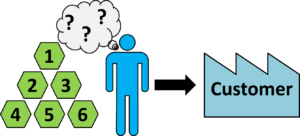 Sometimes, when you need a part or product from your inventory, you may have more than one item in stock. Which one do you pick? In this blog post I want to present a few strategies for choosing which item to take. The most famous one is FIFO, but there are more options available. In my next post I will present similar strategies if you need to start production before the item becomes available.
Sometimes, when you need a part or product from your inventory, you may have more than one item in stock. Which one do you pick? In this blog post I want to present a few strategies for choosing which item to take. The most famous one is FIFO, but there are more options available. In my next post I will present similar strategies if you need to start production before the item becomes available.
Introduction
As said above, this post looks into strategies for deciding which part out of a larger group of parts to pick. The demand could be a customer order or a machine that needs parts to continue working. In any case, you need a part or product, and you have this item readily available. If you have only one item (or only exactly as many as you need), then the rule is simple: Take the one item since you have no other choice. However, if you have more inventory than you need, you have to choose which one to take.
Here we need to distinguish two fundamental different situations:
1) You have (nearly) unlimited capacity to bring material to the place where it is needed. This could be, for example, a delivery process where your ability to ship stuff from your warehouse is much larger than the demand of the customer or the process that consumes the material. In this case you can send anything the customer needs as long as you have it in stock, and the question is only which products to send if you have more products of that type than needed. In other words, if the customer needs three type A’s and you have ten, which three out of ten A’s will you send?
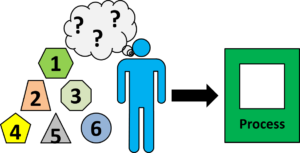 2) You have limited capacity to bring material to the place where it is needed. These are often production processes. You cannot produce all at the same time, but have to make a sequence for production. Here you must look not only at the one product type that the customer at the end wants, but must also consider all products that have to go through the process. In other words, if the customers need three type A, five Type B, and one Type C product, which one do you start with? This will be discussed in the next post.
2) You have limited capacity to bring material to the place where it is needed. These are often production processes. You cannot produce all at the same time, but have to make a sequence for production. Here you must look not only at the one product type that the customer at the end wants, but must also consider all products that have to go through the process. In other words, if the customers need three type A, five Type B, and one Type C product, which one do you start with? This will be discussed in the next post.
FIFO – First In, First Out
The most famous and best known method is FIFO (first in, first out). The first item that entered the inventory is the first item that will be removed. The item that is waiting in inventory the longest will always be taken first.
The big benefit of FIFO is that the parts maintain the sequence in which they arrived. This has multiple advantages. If there is a design change, the not-changed parts are sold first. If you need to update all parts, it is easier to determine which parts to update. Similarly, if you notice a systematic error, it is easier to track which ones to fix, and it may even help you understand the cause of the error. This sequence also avoids parts getting much older than others.
FIFO works with a random-access inventory, where you can get any part at any time. However, the advantage of FIFO is that it can also work with a sequential-access inventory, where you can get a part only if the part in front of it is removed. This is even another advantage since through the design of the inventory you can force your people to always take the next item in a queue. Even if it is not forced, you can make it easier to simply take the next one instead of jumping the line.
You often find this in the supermarket. The spice rack is always restocked from the rear, so the “oldest” spice is always at the front. This avoids spices getting excessively old and losing their flavor. 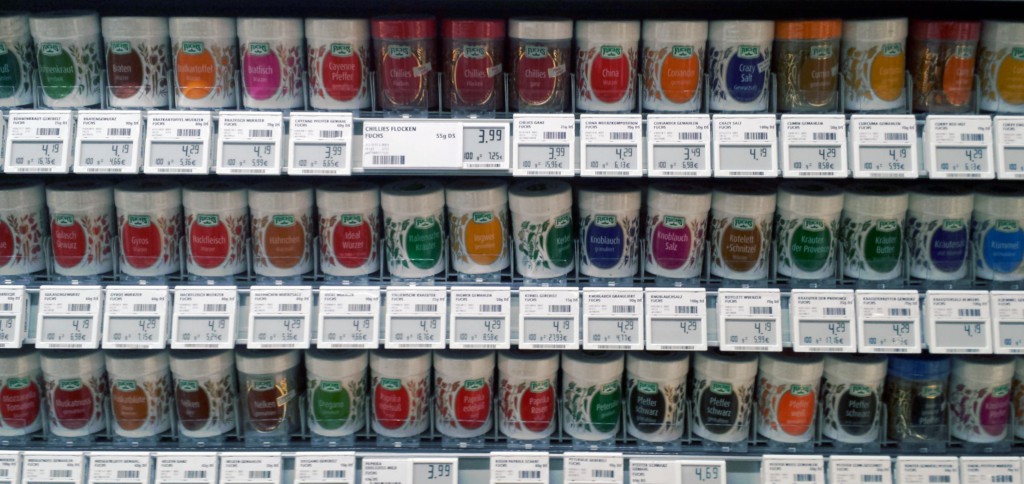
LIFO – Last In, First Out
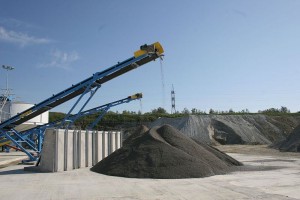 LIFO (last in, first out) is exactly the opposite of FIFO. You always remove the item that has spent the shortest time in the inventory. The big disadvantage is that the oldest items will get older and older and eventually expire before being used. Hence, LIFO is a rather bad strategy. Do not use LIFO if you can avoid it!
LIFO (last in, first out) is exactly the opposite of FIFO. You always remove the item that has spent the shortest time in the inventory. The big disadvantage is that the oldest items will get older and older and eventually expire before being used. Hence, LIFO is a rather bad strategy. Do not use LIFO if you can avoid it!
It is used only if the type of storage forces LIFO on you (i.e., due to the structure of the inventory, you cannot access the oldest item without removing the others first).
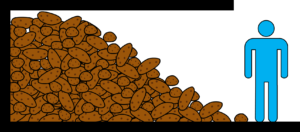 A common example is piles of bulk materials like coal or sand. The material at the very bottom of the pile is the oldest. However, to get to it you would have to remove all the other material. Other examples are a stack of material (e.g., CDs on a spindle, boxes on top of each other) or storage locations that are accessible only from one side (e.g., a potato cellar or other bulk food storage on some farms).
A common example is piles of bulk materials like coal or sand. The material at the very bottom of the pile is the oldest. However, to get to it you would have to remove all the other material. Other examples are a stack of material (e.g., CDs on a spindle, boxes on top of each other) or storage locations that are accessible only from one side (e.g., a potato cellar or other bulk food storage on some farms).
Even if the system forces LIFO on you, it is common to have multiple LIFO storages and periodically empty them completely to avoid excessive aging of the goods. Hence, the potato cellar has to be completely empty once per year, and you use up one of your sand piles completely before moving to the next.
FEFO – First Expiry, First Out
With FEFO (First expiry, first out) you would need to track an expiration date of your goods. The strategy is always to remove the material with the earliest expiration date. This strategy requires random-access storage – or lots of moving goods around to get to the item you want. For most durable goods, this is not necessary. However, if you deal in perishable goods, this may make sense, and may be an even better alternative that FIFO.

For example, if you make yogurt, you may make a batch from very fresh milk and then a second batch from just barely fresh-enough milk. Even though the second batch is newer, you may give it an earlier expiration date. With FEFO this second batch would be sold before the first batch since it expires earlier. Hence overall you will be able to sell fresher products to the customer and extend the shelf life at the customer. This comes at the expense of the additional effort of setting and tracking an expiration date.
You may even use slightly different related expiration dates. Besides the Expiration Date when the product is likely to go bad, there may be a Best Before Date before which quality is next to certain. Some companies also use an End of Life Date, after which the product may be dangerous, or a Removal Date by which the material has to be removed from stock for whatever reason. They all work like FEFO; just substitute the type of date you want.
FEMAL – First Expiry Minimum Available Lifetime
Another variant is FEMAL for First Expiry Minimum Available Lifetime . You deliver the part that has the first expiration date (like FEFO), but with the additional condition that the expiration date must be at least as big as the expiration date desired by the customer.
For this there is even a slightly modified variant if your expiration date depends on the use at the customer. An example in reality would be a polymer resin that lasts 6-12 months if stored at -18°C; but lasts only 4-30 days if stored at 21°C. If you take the resin out of storage and bring it into the factory, it ages faster. Returning it to storage afterwards results in an overall shorter expiration date. In this case there is FESAL (First Expiry Shortest Ambient Lifetime ). Here you update the expiration dates based on the previous history of the product. Many thanks to Juan Carlos Viela for the update in his (Spanish language) article on FIFO or FEFO or, FESAL.
HIFO – Highest In, First Out

Another strategy is HIFO (highest in, first out). If you purchased, produced, or otherwise obtained identical products at different costs, you use the most expensive (highest price) first. The advantage: NONE! Luckily, this method is very rare.
Seriously, this has no advantage! Instead it has the disadvantages of missing out on all the benefits of FIFO or FEFO.
It is still sometimes done for bookkeeping reasons. Depending on how you do your accounting, it may look better on paper to first get rid of the most expensive items from a group of identical items. Your inventory value may be (on paper) lower if you use HIFO. In reality, it has mostly disadvantages, but on paper it may look better. Depending on the country you are in, it may reduce your taxable income.
LOFO – Lowest In, First Out
LOFO (Lowest in, first out … but LIFO was already taken) is exactly the opposite of HIFO. The goods that you purchased cheapest are sold first. This is extremely rarely used if you want to increase the book value of your inventory or your taxable income. Overall, while HIFO is rare, LOFO is mostly an exercise in academic rigor to include all possibilities, no matter how stupid they are.
First One Found (Not Really a Strategy)

The last strategy is not really a strategy, but a common approach in industry. If a part is needed, the worker simply takes the first one he comes across. If the material is organized, this may be the closest one. If the material is less organized, this may require some searching until he finds an item somewhere.
This “strategy” happens usually if there is no real strategy in place. It misses out on all the benefits of FIFO or FEFO, and is a sign of sloppy management.
Overall, if you don’t know what to use, use FIFO. Alternatively, for perishable goods you may use FEFO. Stay away from the rest unless they are forced upon you. Now, go out, get your material in order, and organize your industry!

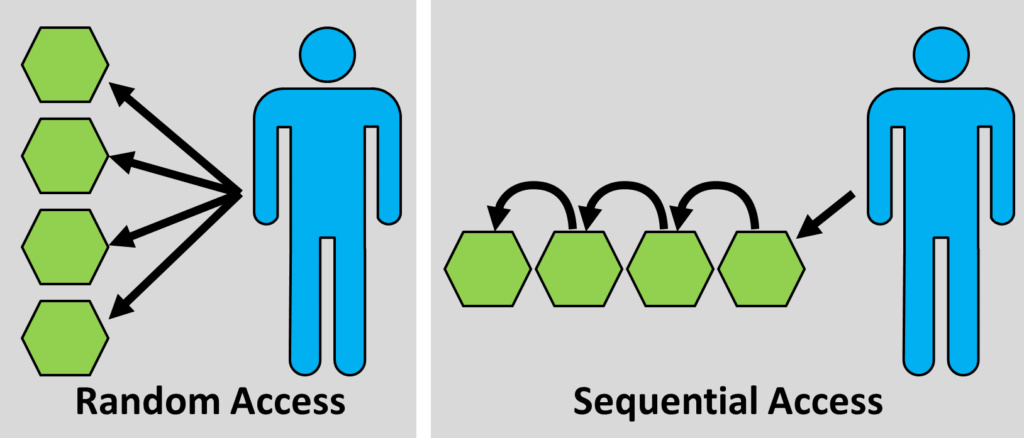
I like all your posts!
As you say, First One Found is not an strategy, but can be suppressed by using registration cards in a file. That is how idle searching time disappeared in the very old times. I can explain how it works upon request.
The acronym FOF is not a standard one. I suggest FOFO, which means First One Found Out (in spanish, flabby).
the idea of saying out first one found is not really a system is a good point. First one found first one out is what happens when there is an unorganized area. This only hurts a company by having to go by this.
FEFO was a inventory management style that I had never heard of, but definitely makes sense! For example, when working with fresh produce or perishable items it can be useful to know what will expire when. This helps keep inventory fresh and relevant. The most useful situation that I can imagine is if when selling produce, if a supplier delivers an item for sale, or that will expire sooner than the current produce this method would be very useful.
as always…..great points!
I agree, that other than FIFO all others should be known, that some people work like that, but should not be used normally.
Thank´s